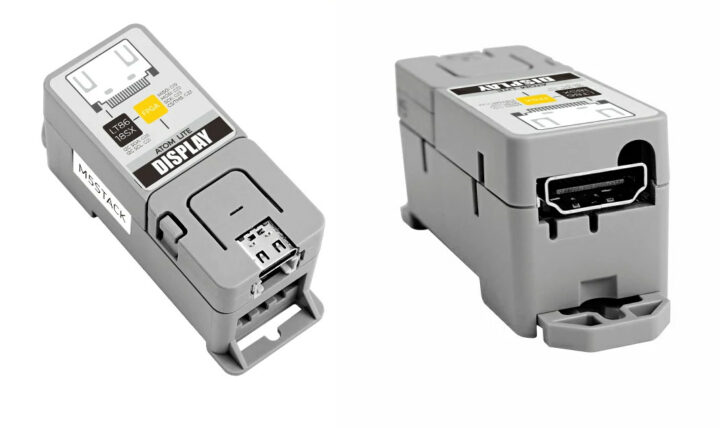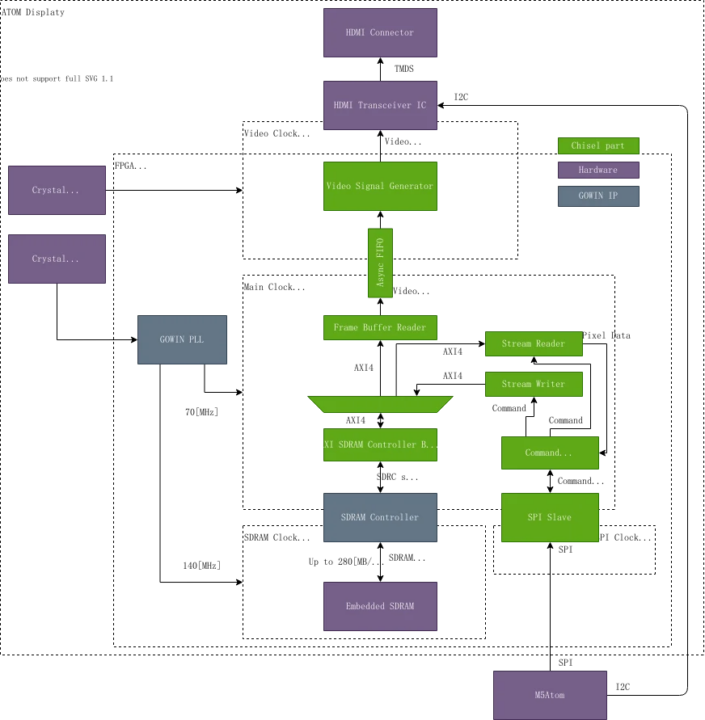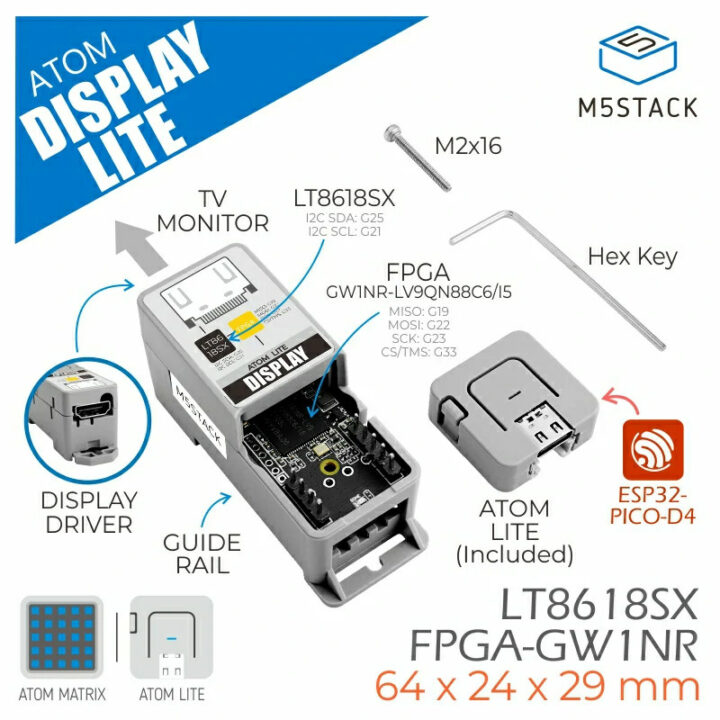M5Stack ATOM Display Lite is a kit based on GOWIN Gowin GW1NR-9C FPGA and LT8618SX RGB to HDMI chip designed to add HDMI output up to 720p to the company’s ESP32-based M5Stack ATOM Lite module.
The ATOM Lite sees the ATOM Display Lite kit as an SPI display, but the solution outputs the data to an HDMI monitor or TV with up to 1280×720 resolution and can be used for information display, menu board, and more.
ATOM Display Lite specifications:
- Wireless IoT modules – M5Stack ATOM Lite ESP32-PICO-D4 based module with 240MHz dual-core CPU, 520KB SRAM, 4MB flash, Wi-Fi 4 and Bluetooth connectivity
- FPGA – Gowin GW1NR-9C (PDF datasheet) FPGA with 8,640 LUTs used to simulate SPI TFT-LCD data output,
- HDMI bridge – Lontium Semi LT8618SX RGB to HDMI chip with 24-bit color depth up to 1280×720 output @ 60 fps (optimized frame rate up to 12 ~ 16FPS)
- Misc- Programmable RGB LED, reset button, user button, Grove expansion port
- Net weight – 21 grams
- Dimensions – 64 x 24 x 29mm
 The M5Stack ATOM Lite module is connected to the kit through SPI to the FPGA, and I2C to the LT8618SX RGB to HDMI chip.
The M5Stack ATOM Lite module is connected to the kit through SPI to the FPGA, and I2C to the LT8618SX RGB to HDMI chip.

At this time, the kit is programmable through the Arduino IDE, but M5Stack is also working on getting UIFlow support (visual programming) to work. The FPGA resources are available on Github. You’ll need Chisel 3.4 and GOWIN EDA v1.9.8 IDE, as well as PlatformIO if you want to run the test from the Github repo.
But as I understand it, it’s just programmable as if another SPI display was connected to the board, and for instance, M5Stack provides a single Arduino demo in the Wiki switching between red, green, and blue screens:
|
1 2 3 4 5 6 7 8 9 10 11 12 13 14 15 16 17 18 19 20 |
#include <Arduino.h> #include <vector> #include <M5AtomDisplay.h> M5AtomDisplay display; void setup(void) { display.begin(); } void loop(void) { display.fillScreen(RED); delay(1000); display.fillScreen(GREEN); delay(1000); display.fillScreen(BLUE); delay(1000); } |
The M5Stack Atom Lite LCD Display Driver Kit is sold for $36.90 with the ATOM Lite module and the ATOM Display kit.
It’s not the first time an SPI to HDMI solution is provided for microcontroller boards, and several years ago, Leung John demonstrated an Arduino HDMI shield in the video below. I’d expect similar capabilities from the M5Stack kit.

Jean-Luc started CNX Software in 2010 as a part-time endeavor, before quitting his job as a software engineering manager, and starting to write daily news, and reviews full time later in 2011.
Support CNX Software! Donate via cryptocurrencies, become a Patron on Patreon, or purchase goods on Amazon or Aliexpress





